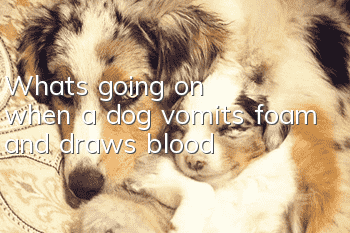The historical origin of the pet dog Dalmatian

Dalmatian dogs (Dalmatian, also called Dalmatian dogs), Dalmatian dogs are white when they are born, and their spots can change. When they are puppies, they have slight spots on their bodies. As they grow up, the spots become obvious and become unique. logo. It is also recognized as one of the most elegant pet dog breeds. Dalmatian dogs are often recorded and explained in ancient models, sculptures, paintings and books, but there is no clear statement that Dalmatian dogs first appeared in Europe, Asia or Africa. Presumably these differences of opinion on the origin of the Dalmatian dog can be unified by some facts, for example, the dog's pattern often appears on the collars of Romanians, and like the Gypsies, it is well known, but not With a definite place of origin, authoritative writers believe that its first official record was in a region of Yugoslavia in western Dalmatia, near the Adriatic Sea. It was a province of Austria between 1815 and 1919, although it may have originated from a dozen countries and had many local names. The British called it the English Carriage Dog, the Fine Pudding Dog, the Stove Family Dog and the Spotted Dick Dog - all names related to the family, and finally the Dalmatian Dog. We can find records of it as a Dalmatian in the mid-18th century. It is obvious that its lineage is very ancient, and the records about it are as straightforward as other breeds.
Dalmatian Dog
It is said that it has many ancestors. On the border between Dalmatia and Croatia, it is often used as a military dog for guarding sentries. Sometimes it is also used as a load-bearing dog or a shepherd dog. It has an extraordinary ability to catch mice and birds, and its heroism in war and firefighting is well known. As a sporting dog, it is used for hunting birds, tracking prey, retrieving prey, and hunting wild boars and deer. Its good memory makes it an excellent performer in an acrobatic troupe or on the stage. As time goes by, Its intelligence and will play an important role in the performance process.
But its most important talent is its status as the ancient and only cart-pulling dog, an imaginative picture that stretches back to the distant past. There is an engraving depicting a spotted dog following an Egyptian carriage. The Dalmatian dog has had this function for centuries, with its ears completely clipped and its neck equipped with a brass buckle, traveling under the carriage as a Followers guard the horses.
Its body is adapted to road work, and its combination of ornamentation, speed and endurance makes it perfect, and its gait is beautiful and rapid, giving the dog ever-lasting strength of endurance. Its ability to drive a cart is determined by its breed, which is both natural and acquired after many years of training. Dalmatian dogs like to be close to horses, and horses also like Dalmatian dogs, just like ducks cannot live without water. No matter where it works, it works hard and shows superb skills, which has earned it the title of the only recognized carriage dog in the world.Goodness is its most famous characteristic, but in a way, close to its friendly nature.
The coat of the spotted dog is smooth and gorgeous, and the white coat is dotted with clear-cut dark black, liver, and dark brown spots, which is unmatched by other dogs. It does not look like any other dog because these spots are exclusive to it. It is strong, clean, energetic and very unique. Its gorgeous spots are the highest level of careful breeding over many years.
It is a very quiet dog and an ideal guard dog. It likes to play and bark. Its politeness never fails the observer, but it has a high sense of protection and strong defense capabilities. As a guard dog, it is both sensitive and reliable. It is not everyone's dog and will not destroy its owner's feelings because of certain interests. It can clearly distinguish who it belongs to. Upper class society did not distort the image of the Dalmatian. It is born pure white, grows quickly and does not require shearing, tail docking, striping or any artificial shaping. It is in its nature to be willing to hunt and participate in show competitions. It is very strong, easy to manage, suitable for any climate and requires minimal care to keep strong, neat and clean.
- How to cut your pet's nails
- What to do if your dog’s milk is engorged
- How to solve constipation in puppies
- What are the common methods for training dogs? Teach you how to communicate and train with your dog!
- How to Treat Ear Canal Infections in Silver Fox Dogs
- General treatments for dog poisoning
- What vaccines do dogs really need? What vaccines are necessary for your dog?
- What are the significant advantages of Corgis?
- Is your dog always sneezing? Sometimes it’s not as simple as catching a cold!
- Does cryptorchidism have a big impact on dogs?



